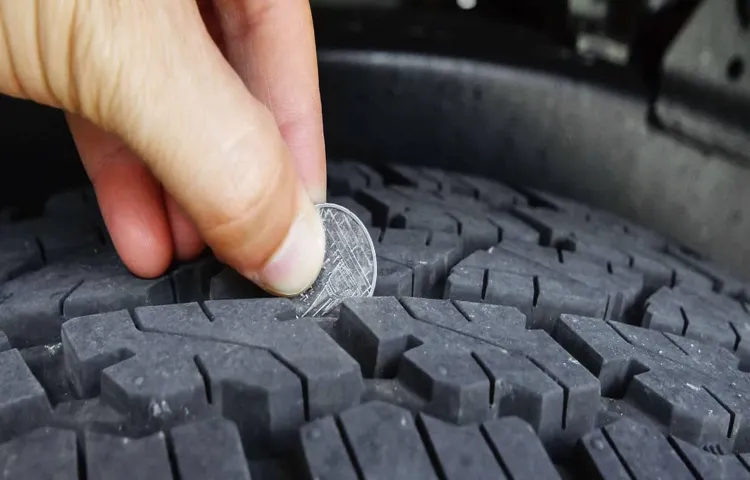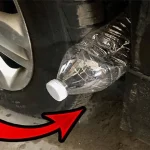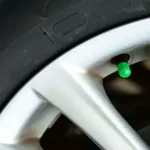Have you ever wondered what would happen if one of your vehicle’s tires was bigger than the rest? Well, it’s not uncommon for drivers to modify their cars by installing oversized tires to increase ground clearance or enhance the vehicle’s aesthetics. However, did you know that using a larger tire size than recommended by the manufacturer can lead to significant problems? Firstly, having one larger tire would alter the vehicle’s overall height, making it uneven. As a result, your car’s suspension system would be affected, leading to increased wear and tear on certain components such as the shocks and springs.
Furthermore, the larger tire would have a different rolling circumference than the rest of the tires, which can affect the car’s balance and handling. This could affect the steering, acceleration, and braking, which could lead to accidents and put your safety at risk. Furthermore, using one larger tire can also affect the car’s efficiency and fuel consumption.
As the larger tire requires more force to turn, this could lead to decreased fuel economy and more stress on the engine, resulting in higher repair costs. In conclusion, while modifying your vehicle’s tires may seem like a small change, using a larger tire than recommended could lead to significant problems. It’s important to follow the manufacturer’s recommendations and ensure that all tires are the same size to maintain balance, stability, and performance while you’re on the road.
Table of Contents
Effects of Uneven Tire Size
Have you ever wondered what happens if one tire is bigger than the rest? Uneven tire size can cause all sorts of problems, including handling issues, decreased fuel efficiency, and increased wear on your vehicle’s drivetrain. When one tire is bigger than the rest, it can cause the vehicle to pull to one side or the other, making it harder to steer and handle. This is especially dangerous in wet or icy conditions when you need maximum traction to maintain control of your vehicle.
In addition, having one tire that is significantly larger than the rest can cause uneven wear on your tires, which can lead to costly repairs down the road. To avoid these issues, it’s important to ensure that all of your tires are the same size and properly inflated. Regular tire maintenance and replacement can help you avoid the negative effects of uneven tire size.
Uneven Tire Wear
Uneven tire wear can have a variety of effects on your vehicle, including decreased fuel efficiency, reduced handling and maneuverability, and even potential safety hazards. One thing to keep in mind is that uneven tire wear can often be caused by using tires of different sizes on your vehicle. This can happen if you replace just one tire instead of the whole set, or if you mix and match tire brands or models.
The difference in size can put uneven stress on your car’s drivetrain, causing problems with alignment, suspension, and overall performance. It’s important to always use the same size and type of tire on all wheels to ensure proper function and avoid any negative effects of uneven wear.

Handling and Stability Issues
Uneven tire size can significantly affect the handling and stability of your vehicle. A difference in tire size can cause an uneven distribution of weight and upset the balance of your vehicle. This imbalance can cause your vehicle to pull to one side, making it difficult to maintain control while driving.
Additionally, an uneven tire size can also lead to tire wear and tear, resulting in potential blowouts or flat tires. To ensure the safety and performance of your vehicle, it’s important to use tires that are of the same size and construction. If you notice any handling or stability issues, it’s best to have your tires checked by a professional to avoid potential accidents or damage to your vehicle.
Remember, when it comes to tire size, balance is key.
Transmission and Differential Damage
Uneven tire sizes can have a significant impact on the functionality of your car’s transmission and differential. When tires of varying sizes are used on the same axle, it can cause the differential to work overtime and create excess heat, leading to accelerated wear and potential damage. This is particularly true for rear-wheel-drive vehicles, which rely heavily on the differential to distribute power to the wheels.
Worn or damaged differentials can cause a variety of problems, including noisy operation, decreased performance, and even total failure. Additionally, uneven tire sizes can cause issues with the transmission, as it relies on the differential for proper gearing. To ensure optimal performance and prevent damage, it is essential to maintain consistent tire sizes and seek professional assistance if you suspect any issues with your car’s transmission or differential.
Overall, staying on top of tire size and related maintenance is key to keeping your car running smoothly and avoiding costly repairs.
How to Fix Uneven Tire Size
What happens if one tire is bigger than the rest? Well, first of all, it’s important to understand that having uneven tire sizes can result in serious consequences for your vehicle. One tire that’s larger than the others can cause problems with the stability of your car, create uneven wear and tear on your tires, and even affect the performance of your brakes. If you’re dealing with uneven tire sizes, the best solution is always to replace all four tires instead of just one or two.
However, if you can’t replace all of your tires at once, you may be able to have the tire shaved down to match the other tires. Many mechanics or tire shops offer tire shaving services that can help you even out your tire sizes and prolong the life of your tires. Alternatively, you can consult your manufacturer’s guidelines to get an idea of how much tire size difference is tolerable for your specific make and model of car.
Ultimately, it’s crucial to take care of your tires and keep them all at the same size to ensure a comfortable and safe driving experience.
Replacing the Tires
Uneven tire size can result in serious safety issues and negatively affect the performance of your vehicle. So, if you notice any difference in the size of your tires, it’s essential to address the issue right away. The first thing to do is to determine the cause of the unevenness.
It could be due to wear and tear, improper inflation, or even a manufacturing defect. Once you’ve identified the reason, you can take the necessary steps to fix the problem. In some cases, you might be able to adjust the air pressure to even out the tire size.
But if the difference is significant, you may need to replace the tires entirely. When replacing your tires, ensure that you get ones that are the same size and have the same load rating as the original ones. This helps ensure that your vehicle maintains its stability and handling capabilities.
Remember, driving with uneven tires can put you and your passengers at risk, so don’t hesitate to take action to fix the problem promptly.
Using Tire Shims
Fix Uneven Tire Size If you have mismatched tire sizes on your vehicle, it can mess with your car’s handling and performance. Tire shims can be a simple and cost-effective solution to fix uneven tire size. These shims sit between the wheel mounting surface and the hub assembly, correcting any differences in size.
Additionally, they can help prevent vibrations, and increase tire life by making sure the tires are wearing evenly. When installing shims, it’s important to make sure they fit snugly and securely to avoid any issues during driving. While tire shims can be a temporary fix, it’s still essential to invest in matching tires long-term to ensure optimal performance and safety.
With tire shims, you can quickly even out your tire sizes and get back to a smoother ride on the road.
Install a New Differential
If you’ve recently changed the size of your tires and notice that they’re uneven, it’s time to install a new differential. Uneven tire size can cause handling problems, increase tire wear, and damage your vehicle. Installing a new differential can help fix this problem and improve your vehicle’s traction, acceleration, and overall performance.
It’s important to ensure that the differential you install is compatible with your vehicle’s specifications and that it’s installed correctly by a professional. A qualified mechanic can diagnose the problem and recommend the best solution for your situation. Don’t let uneven tire size put you and your vehicle at risk, consider installing a new differential to keep your vehicle running smoothly and safely on the road.
Conclusion
In the world of automobiles, size does matter – but only when it comes to tires. While one slightly larger tire may seem like a harmless quirk, it can actually cause a whole host of problems, from handling issues to damage to other components. So remember, when it comes to your car’s tires, always keep them on the same level – or risk rolling down a bumpy road of trouble!”
FAQs
1. What are the potential issues of having one tire that is larger than the others? A: Having a tire that is larger than the others can cause uneven wear and tear on the tires, affect the vehicle’s handling and stability, and potentially damage the drivetrain and suspension system. 2. Can you mix different tire sizes on a vehicle? A: It is not recommended to mix tire sizes on a vehicle. This can cause issues with handling, stability, and wear and tear on the tires. 3. How can you tell if your tires are the proper size for your vehicle? A: The correct tire size for a vehicle can usually be found in the owner’s manual or on a sticker inside the driver-side door jamb. It is important to always use the recommended tire size for your vehicle. 4. Are there any benefits to having larger tires on a vehicle? A: Installing larger tires can improve the vehicle’s off-road capabilities and potentially increase ground clearance. However, it is important to ensure that the larger tires are compatible with the vehicle and do not cause any negative effects. 5. How often should I check my tire size and inflation pressure? A: It is recommended to check your tire size and inflation pressure at least once a month. Proper tire maintenance can help prolong the life of your tires and ensure safe driving conditions. 6. Can tire size affect my vehicle’s gas mileage? A: Yes, tire size can affect a vehicle’s gas mileage. Larger tires can cause a decrease in fuel efficiency, while smaller tires can potentially increase fuel efficiency. 7. Should I replace all my tires at once or just the damaged one? A: It is recommended to replace all tires at once to maintain even wear and tear, balance, and stability. Mixing new and old tires can cause issues with handling and safety.



